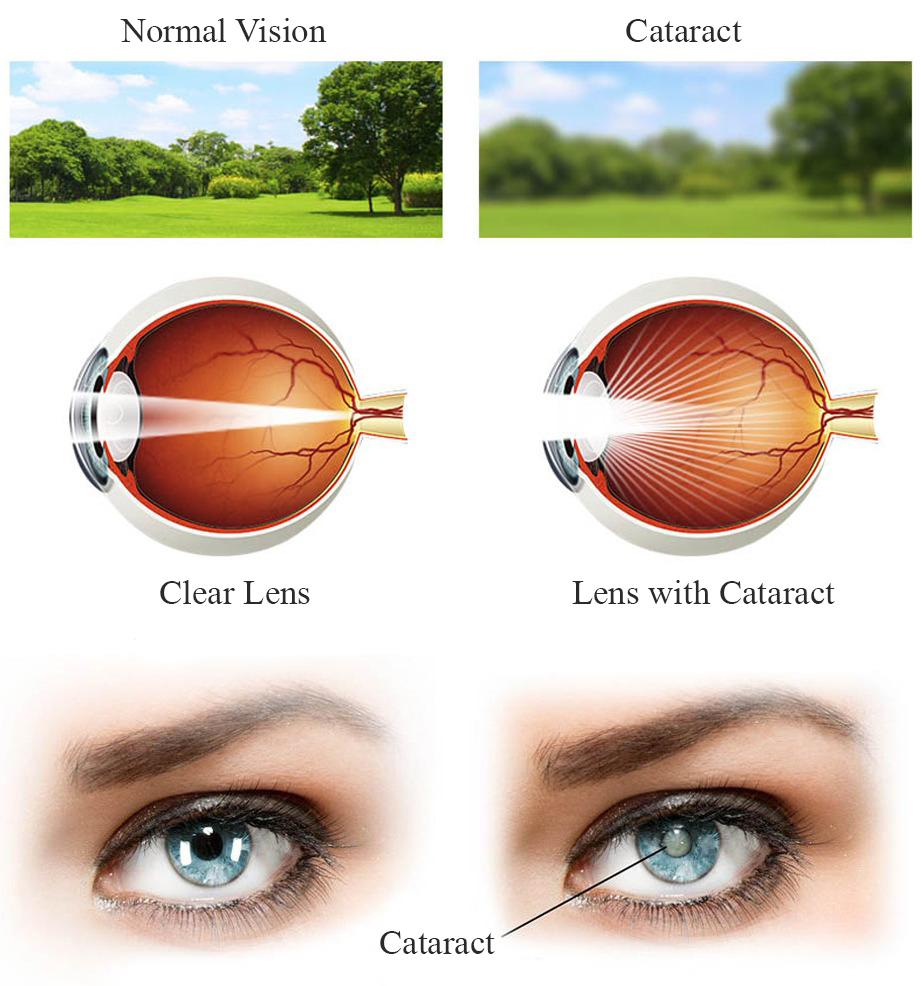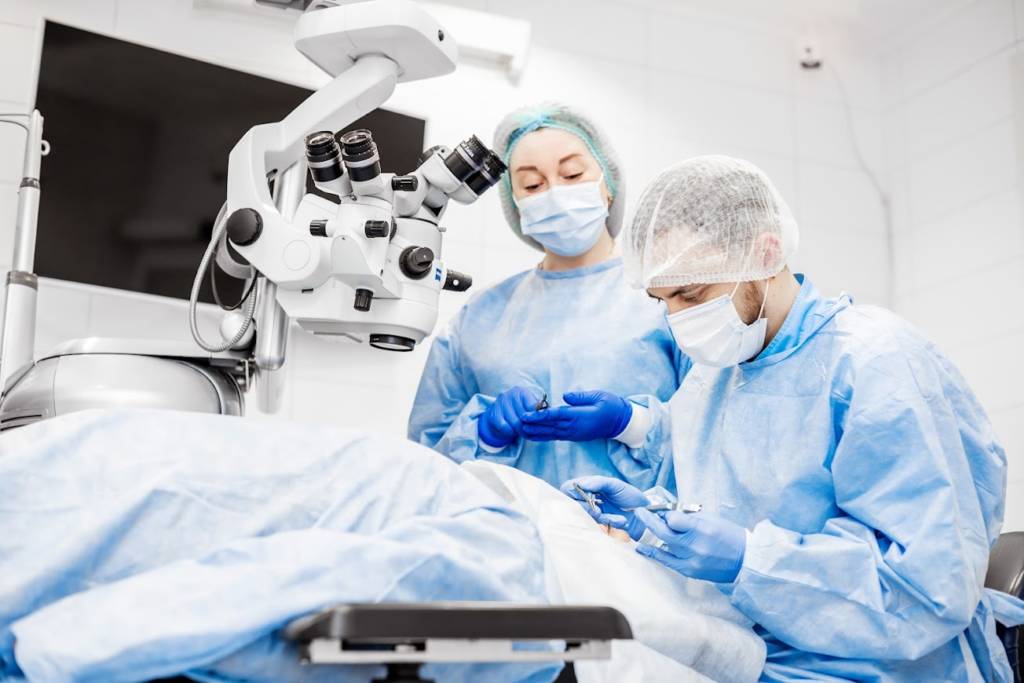The development of science does not stand still and allows even now to improve each stage of operations in cataract surgery and achieve even greater results. Surgical technologies bring this direction to the robotic level with its inherent unprecedented capabilities in quality, phenomenal accuracy and the highest safety.
So today, the femtosecond laser is truly the most accurate microsurgical instrument in the world and has nanometric resolution when performing any surgical procedures for cataracts, and also allows you to use its unique capabilities, performing delicate stages of surgery, directly inside the eye without the need to “open” the eyeball.
The entire course of laser cataract surgery is planned and calculated individually, taking into account the anatomy and pathological changes for each patient, all stages of exposure are programmed on a computer in order to perform a filigree intervention at the highest possible level of quality, accuracy, reliability and safety in just a few seconds which cannot be produced by hand by any of the world’s best surgeons.

In addition, FemtoLaser support for phacoemulsification is actively used, therefore, at present, ultrasonic cataract surgery also remains one of the safe and reliable technologies for lens replacement.
How laser cataract surgery is performed on FEMTO LDV Z8 Ziemer (Switzerland):
• After a detailed ophthalmological diagnostic examination, collection of tests required for surgical intervention, the patient comes to the hospital at the appointed date and time for the operation.
• After undergoing a preoperative examination by an ophthalmologist and a consultation with an anesthesiologist, he goes to the operating unit for direct preparation, after which the operation itself soon begins.
• Before starting laser cataract removal, the operating surgeon programs directly on the computer of the Ziemer FEMTO LDV Z8 robotic laser system the main stages of the operation strictly individually based on clinical data, taking into account all the anatomical features of the patient. The stage of performing the main access and paracentesis by the laser is sequentially programmed, taking into account their placement, shape and geometry, the stage of forming a personalized capsulorhexis with the calculation of its size, shape and alignment, as well as the phase of femtosecond phacofragmentation with determining the number and type of fragments, based on the density and type of cataract patient.
• After that, the FemtoLaser system diffuser and the patient’s eye are docked for robotic cataract surgery in just a few seconds, in a fully automatic laser mode, but under the obligatory control of the surgeon.
• The next step is laser capsulorhexis – a round hole in the anterior lens capsule, which opens access to the lens substance. The Femtosecond Laser allows capsulorhexis with perfect centering and precisely programmed size, which is of great importance for the correct implantation of the artificial lens and prevents damage to the capsular bag due to complications possible with manual capsulorhexis. The correct intracapsular position of the IOL relative to capsulorhexis ensures that all the excellent optical properties of intraocular lenses are realized, and when implanted with toric lenses and premium IOLs, their optical capabilities will be used to the maximum.
• The next step performed by the FemtoLaser is the safe and atraumatic fragmentation of the clouded lens substance, which is subsequently emulsified using ultrasound and aspirated through microaccesses of only 1.1 mm in size, formed by the laser. At this stage, the maximum prevention of possible complications is also achieved, even with dense cataracts and deficiency ligamentous apparatus of the lens present at the stage of fragmentation in the manual method. It also ensures the preservation of endothelial cells and the ligamentous apparatus of the lens, which are of great importance for the recovery of the patient in the early postoperative period and affect the quality of vision in the late postoperative period.

The effectiveness of FemtoLaser in cataracts:
Clinical studies show that the accuracy in the size of FemtoLaser capsulorhexis is 100% versus only 10% (within 0.25 mm) performed by the manual method. This indicator is essential in the prevention of decentration of the intraocular lens in the postoperative period.
The energy dissipated inside the eye during laser phacoemulsification is 40-56% lower compared to the traditional ultrasound technique. This fact significantly reduces postoperative inflammation and possible consequences for the ocular structures surrounding the lens. Therefore, the laser allows more safe operation of all types of cataracts, from routine to complicated, combined, for example, with myopia, glaucoma, corneal endothelial dystrophy, macular degeneration, pseudoexfoliation syndrome, ectopia of the lens, lens subluxation of varying severity and other pathologies that affect the outcome surgical intervention.
How long does laser cataract surgery and the postoperative period last?
FemtoLaser cataract surgery with the FEMTO LDV Z8 Ziemer has undeniable advantages in terms of accuracy and safety in performing the most important stages of the operation, which ensures maximum postoperative results.
After placing the applanation system on the patient’s eyeball, it takes only 30-40 seconds to perform the FemtoLaser part of cataract removal. Femtosecond Laser in cataract surgery with implantation of both monofocal IOLs and multifocal, toric, EDOF IOLs, allows achieving an ideal optical result and minimizing the period of postoperative recovery of the patient.
Benefits of choosing AstraMedicaGroup
Only top qualified doctors
JCI certificated hospitals
Free COVID-19 Test before departure
4 nights in a 5-star hotel in Istanbul
Costs for laboratory, medication and equipment
Pre/post-operative tests
Free Istanbul tours
Latest technologies
Excelent travel assistance
All-round VIP transfer
Credit / Debit cards accepted
No prepayment
Personal assistants speak in English
24/7 customer service
